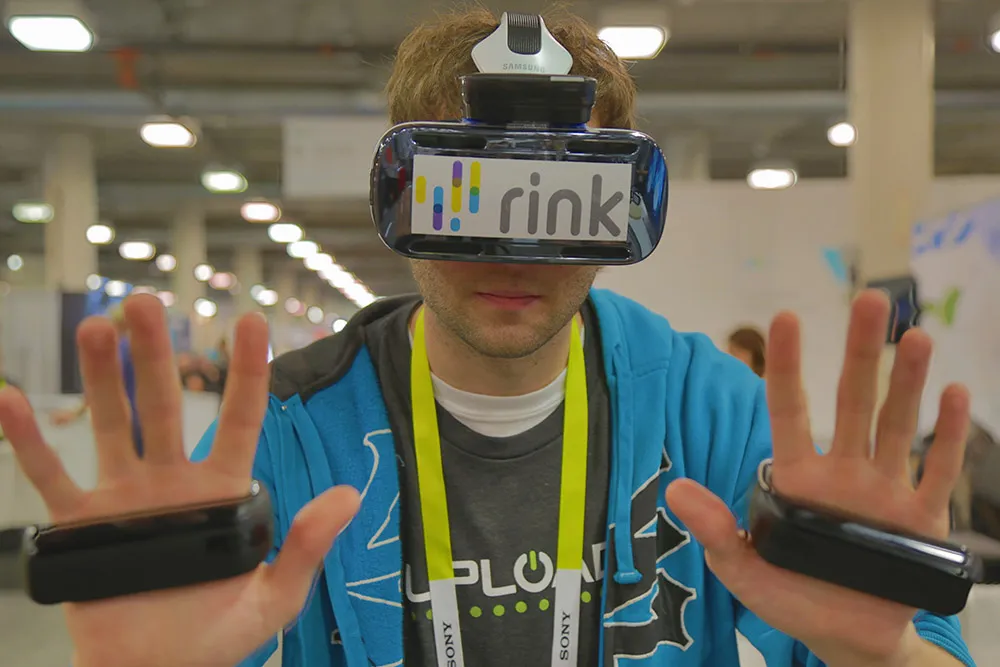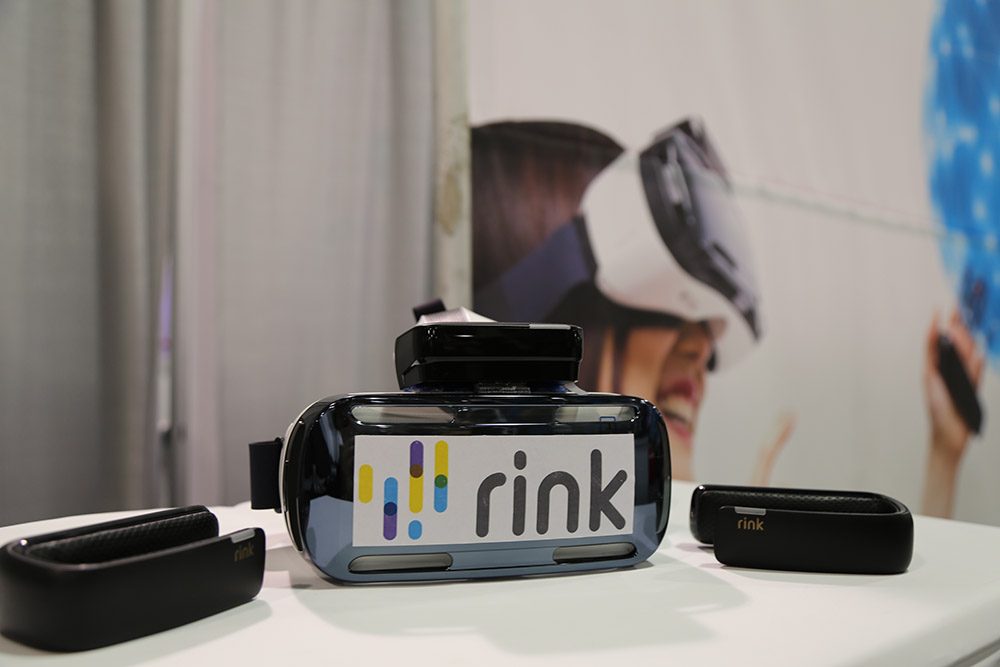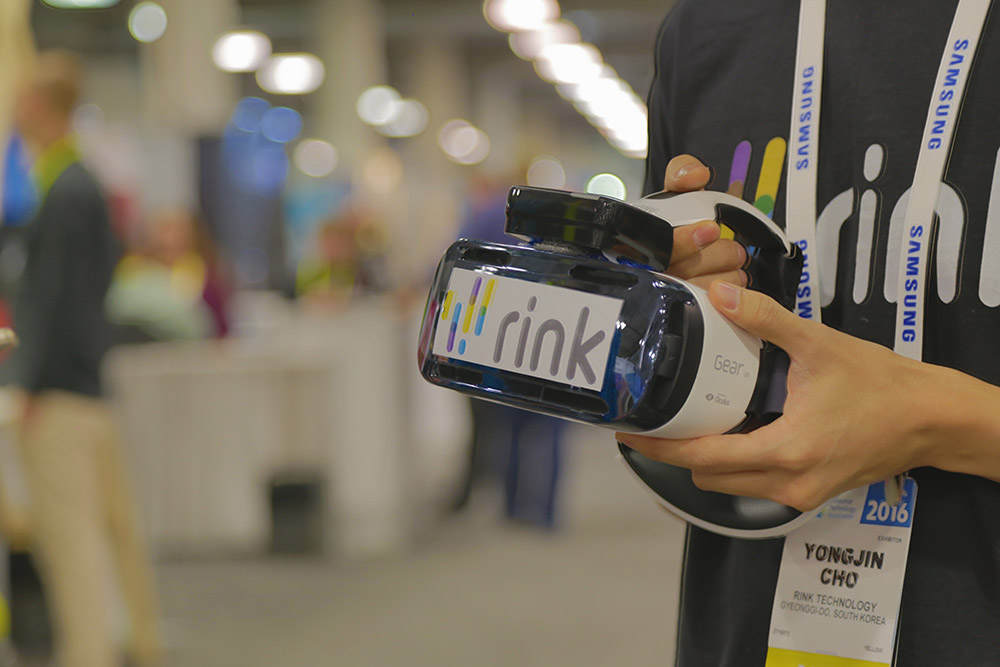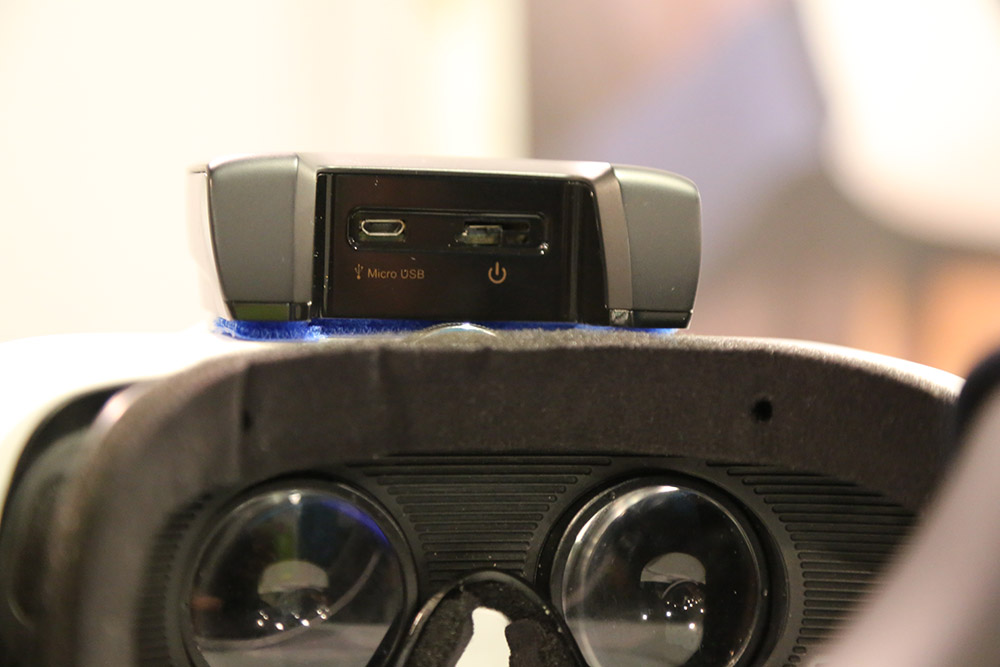Days before 2016 CES, Samsung published a blog post teasing a collection of research experiments to be shown during the expo. Among those was a set of new handheld motion controllers for virtual reality use.
Dubbed Rink, the devices contain various sensors to track the controllers’ movements through data encoded magnetic fields. This allows users to reach out and play with objects within virtual worlds, providing mobile headsets with much needed interaction.
The Rink controllers are not limited to the Gear VR and can be used with other smartphone-based headsets like Google Cardboard in addition to Samsung’s own head mounted display (HMD). All that is needed is a bluetooth connection from both devices linking to a phone.
In order to establish a connection, a transmitter sits atop the headset sending magnetic signals to receiver coils found within the controllers. Then, those controllers send their location, which is determined by how far they are from the transmitter, to the phone. The current range for the Rink prototype is about 1 meter, roughly stretching arms length.
Not only can the Rink system detect hand movements, it can also recognize finger positions through the use of infrared sensors embedded into the sides of the units as well. Infrared light emits outward and bounces back to the controller letting the program know that there are fingers in front of it.
After trying the demonstration, the Rink controllers worked surprisingly well. There were some issues, for instance, occasionally the devices would lose tracking as my lanky arms stretched passed signal radius causing my virtual hands to disappear. Despite the occasional bug, it was extremely easy to interact with objects while inside a virtual environment.
Those who got a chance to test out the Rink at CES would first find themselves in a futuristic control room with a wireframe representation of a globe. Squeezing the controllers while making a fist would allow users to grab the world and make it larger or shrink it depending on which way they moved their hands. From there, sliders would pop up to change the colors of the virtual hands.
During the CES demo, pressing a start button caused the environment to fade out, bringing people floating over an ocean as drones quickly flew around. Opening one’s hands shot energy balls at the drones, in an Iron Man like way. It was quite fun.
https://www.youtube.com/watch?time_continue=28&v=dHrfMpH7Bf8
Because the transmitter acts independently from the phone, there is no additional processing power needed. All it takes is an app, in this case a Unity application with a custom SDK, to track the controller in real time with low latency. The transmitter is also lightweight, so much so that it is almost undetectable when wearing the headset.
Although Samsung’s research team hasn’t mentioned price or a release date yet, it is clear that motion controllers for mobile VR headsets is the logical next step. Interaction adds another level of experience to VR and having such a portable solution will further bring VR into the mainstream.
To learn more about Rink, visit their website here: rinktech.co/





























